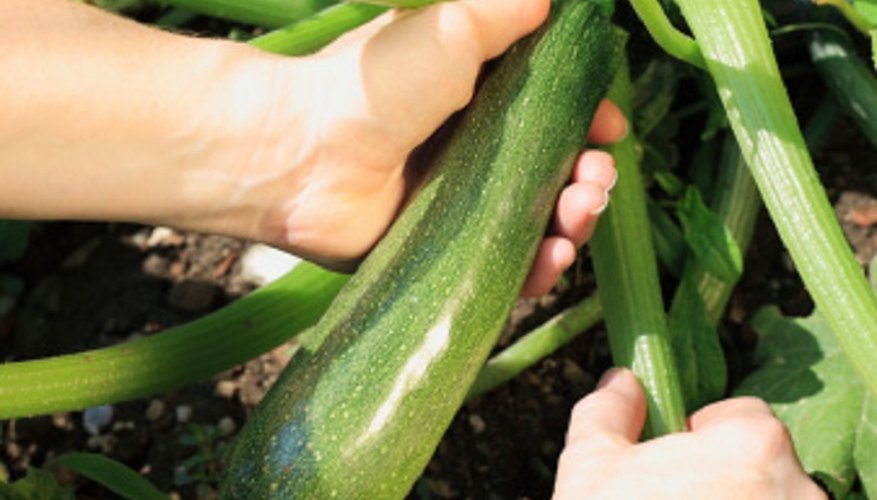A member of the squash family and known as the zucchini in America, courgette makes a great addition to summer dishes such as soups, salads and risottos. It is a fairly perishable vegetable, so it will not survive after ripening for more than a few days. As with all vegetables, it is crucial to avoid eating bad courgette, which could lead to food poisoning and put you off the vegetable for life.
- A member of the squash family and known as the zucchini in America, courgette makes a great addition to summer dishes such as soups, salads and risottos.
- As with all vegetables, it is crucial to avoid eating bad courgette, which could lead to food poisoning and put you off the vegetable for life.
Examine the courgette. A good courgette will have a uniform dark green skin. A bad courgette will have dark brown or black spots or a slimy covering, and should not be eaten. A yellow-skinned courgette is not ripe enough to eat and should be left for another few days to ripen.
Check the skin of the courgette. If the skin is broken, it is likely to have gone bad already. Small nicks and marks do not necessarily mean the courgette has gone bad. Look for bruises; damaged skin will be more prone to splitting, so cook it before this has a chance to happen. Avoid courgettes with deep gashes or extensive bruising.
- Check the skin of the courgette.
- If the skin is broken, it is likely to have gone bad already.
Feel the courgette. Use a gentle touch so you don't cause damage. If it feels fairly firm - marginally softer than a cucumber - it should still be good. If it feels soft or rubbery, or has a shrivelled top or bottom, it may have already gone bad. The only thing soft courgette is good for is making courgette bread.
